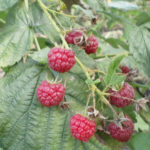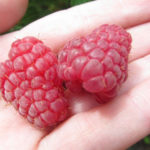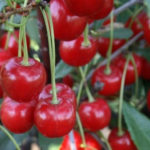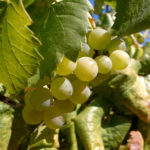Cherry plum variety Lama
The job of breeders is to create varieties that are adapted to unfamiliar growing conditions. For example, the heat-loving cherry plum has increased its frost resistance, and now many varieties can be grown in regions with an unstable climate. Among such cold-resistant species is the Lama. This young variety, which appeared at the beginning of 2000, has already aroused interest among gardeners. Its creator, V.A. Matveev, works in the RUE "Institute of Fruit Growing" in Belarus. The variety is perfect for the central regions of Russia.

Description
The tree is highly decorative. It is very compact, ranging in height from 1.5 to 2 meters. The crown is beautiful, neat, flat-round. The small size makes it much easier to care for and harvest. Shoot formation in the variety is good, so the crown has a tendency to thicken. The bark of a young plant has a burgundy red hue. Over the years, it darkens, becomes rough. Cherry plum leaves are elongated, lanceolate, taper towards the base, 18 - 19 cm long. The edge of the leaf plate is serrate. The surface of the leaf is smooth, slightly shiny, with reticular veins, which are more clearly visible on the back. The petiole is ordinary. The leaf and petiole have an anthocyanin coloration. Young leaves of the Lama are light brown, caramel shade, with a glossy sheen. An adult leaf darkens, becomes chocolate-red, and the top of the plate has a greenish tint, and a red tone prevails on the underside. This elegant two-tone color of the leaves remains unchanged throughout the summer period. In the fall, the foliage turns yellow. The flowers are small, a little more than 3 cm in diameter. They are formed on annual shoots, collected in compact bouquet inflorescences of 5 - 6 pieces. The color of the petals is white, with a pale pink tint. Already a two-year-old seedling of this variety can be observed abundant, lush flowering.
Lama fruits are round-oval in shape and large in size - on average they weigh about 30 grams. The abdominal suture is poorly expressed. The ovary is glabrous, becoming reddish. In the period of maturity, the skin of the fruit turns purple or burgundy, by the end of September it is almost black. Gray subcutaneous dots are clearly visible, thick wax coating. The pulp is medium-dense, fibrous, tender, juicy, red-pink in color. The aroma is dim. The not quite ripe pulp crunches slightly. The cherry plum tastes sweet and sour, and the sourness is more pronounced near the stone, the aftertaste gives off subtle almond notes. Assessment of tasters - 4.4 points. The juice is dark red. The peduncle is not very long, the separation is dry. The stone is small, easily separated from the pulp.
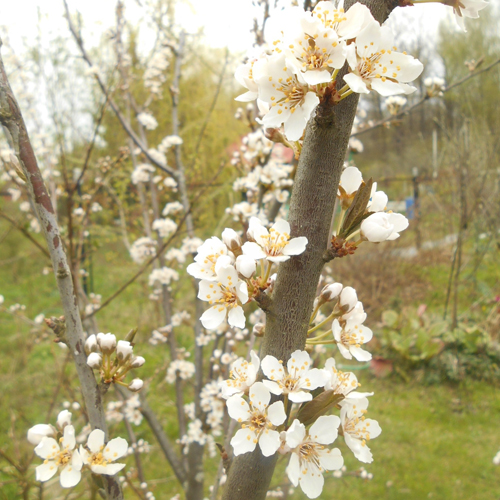
Characteristics
- Llama begins to bear fruit already 2 - 3 years after planting in a permanent place, which indicates its good early maturity;
- flowering occurs in late April - early May. The later awakening of flowers saves them from recurrent frosts and protects the ovary from the moth;
- in terms of ripening cherry plum is medium late. The first fruits can be picked at the end of August;
- the yield of the variety is excellent. At the beginning of the fruiting period, in the 3rd year, the culture already yields up to 40 kg per tree. And an adult specimen generously presents with a harvest of up to 300 kg;
- winter hardiness of the plant is excellent, withstands frosts down to -36 ° C. Temperature drops, when thaws give way to returning frosts, can be dangerous. The awakening flower buds can withstand up to -7 ° C;
- drought resistance is good, heat resistance is also at a high level - cherry plum can withstand forty-degree heat;
- The llama is highly resistant to various fungal diseases and pest infestations. The fruits are not damaged by birds;
- ripe fruits are prone to shedding;
- if the crop is harvested during the period of technical ripeness, it perfectly withstands transportation over long distances;
- in a processed storage facility at a temperature not exceeding 3 ° C and a humidity of 85 - 95%, the crop can be stored for up to 4 months;
- harvested fruits can be used in different ways - they are tasty in their natural form, suitable for canning and processing into jam, jam, marmalade, compote, jam.
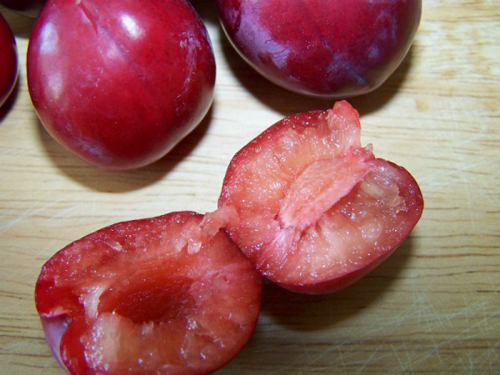
Pollinators
Llama has partial self-fertility, atypical for most hybrids. To improve the quality and quantity of cherry plum fruits, a pollinator is needed in the garden. They are great for this role Mara and Asaloda, which were also withdrawn to the RUE “Institute of Fruit Growing”.
Landing and features of agricultural technology
In the southern regions, planting is preferable in autumn, in cooler regions - in spring. In the conditions of the Moscow region, it is possible to plant in any of these periods. The soil should be loose and nutritious, although the variety is not particularly picky and can grow on any soil. The main thing is that they are of neutral acidity, and the level of groundwater passes no higher than 1.5 meters to the surface.
Choose a place for the Lama that is sunny, sheltered from the winds, otherwise the ovary may fall off. By the way, cherry plum forms a large number of ovaries, so rationing of the crop is a mandatory procedure. Pruning is another activity that needs to be carried out annually due to the increased thickening of the crown. But it is quite easy to perform it, the tree is simply formed and can be given any shape that fits into the landscape of your garden corner. Otherwise, the care is carried out according to the standard rules.
Llama is a great plant that can decorate even the most boring corner of the garden. Unpretentiousness, resistance to diseases and pests, frost resistance and heat resistance, ease of formation - these are not even all the positive characteristics of the variety. A huge harvest will be enough for numerous harvests, which will come in handy in the winter. The disadvantages of cherry plum are partial self-fertility, the need for annual pruning and shedding of ripe drupes.

